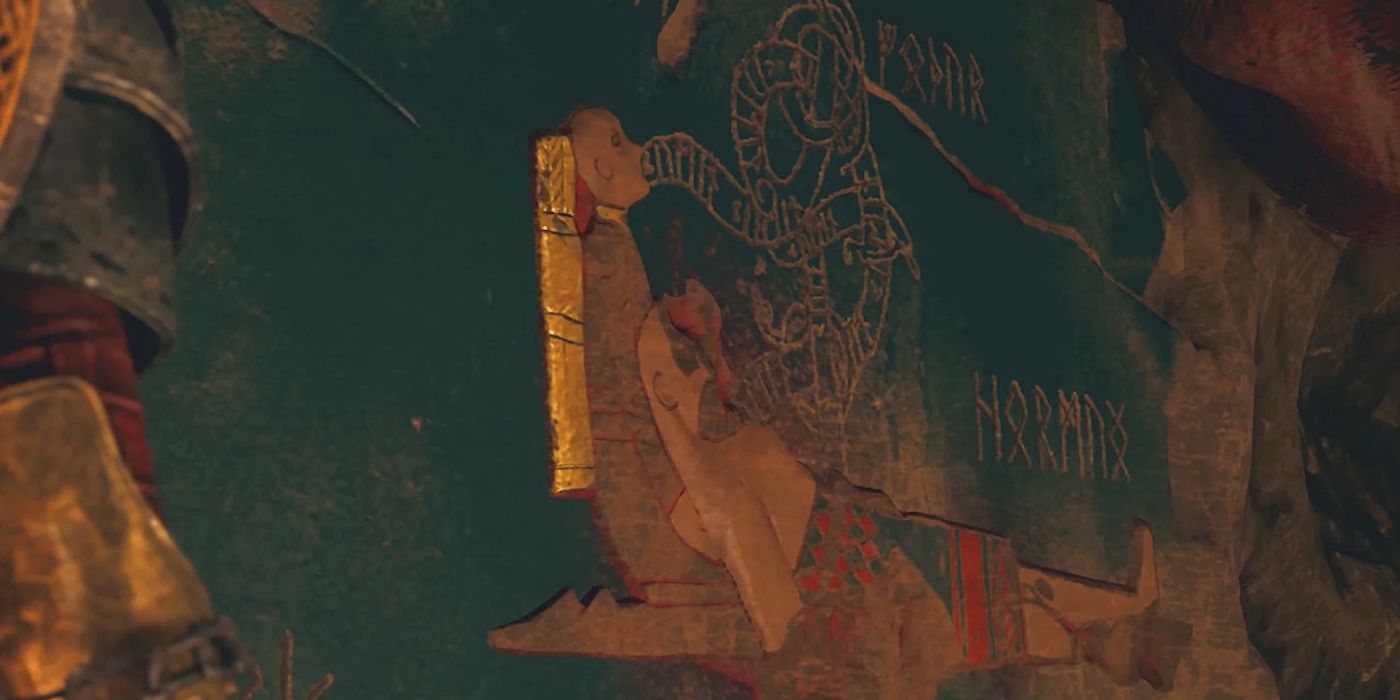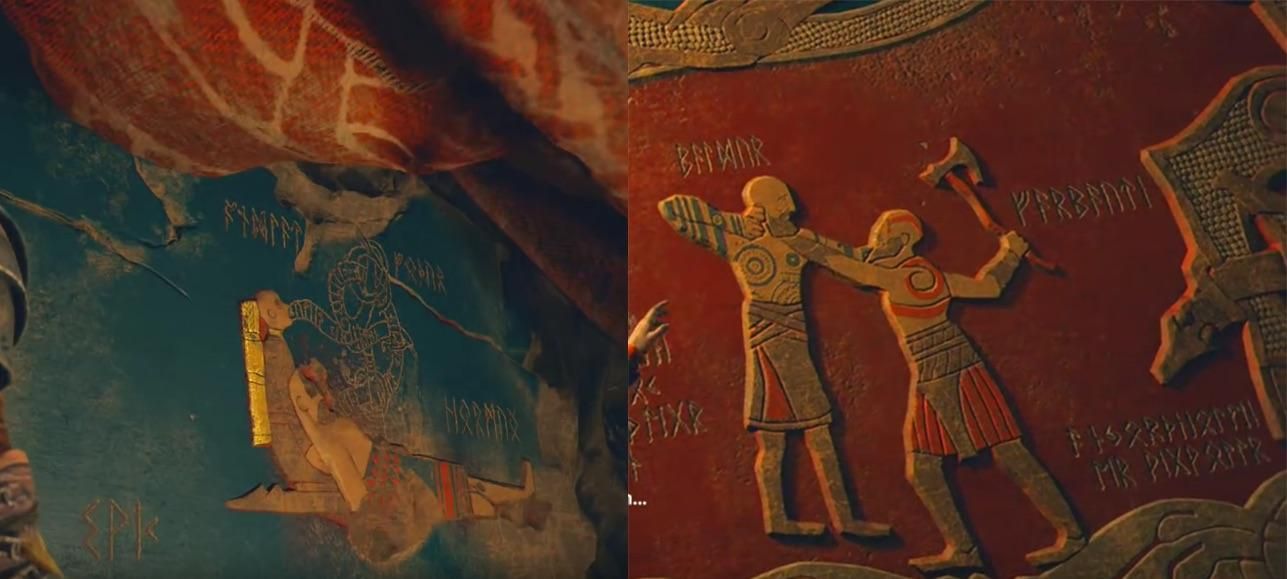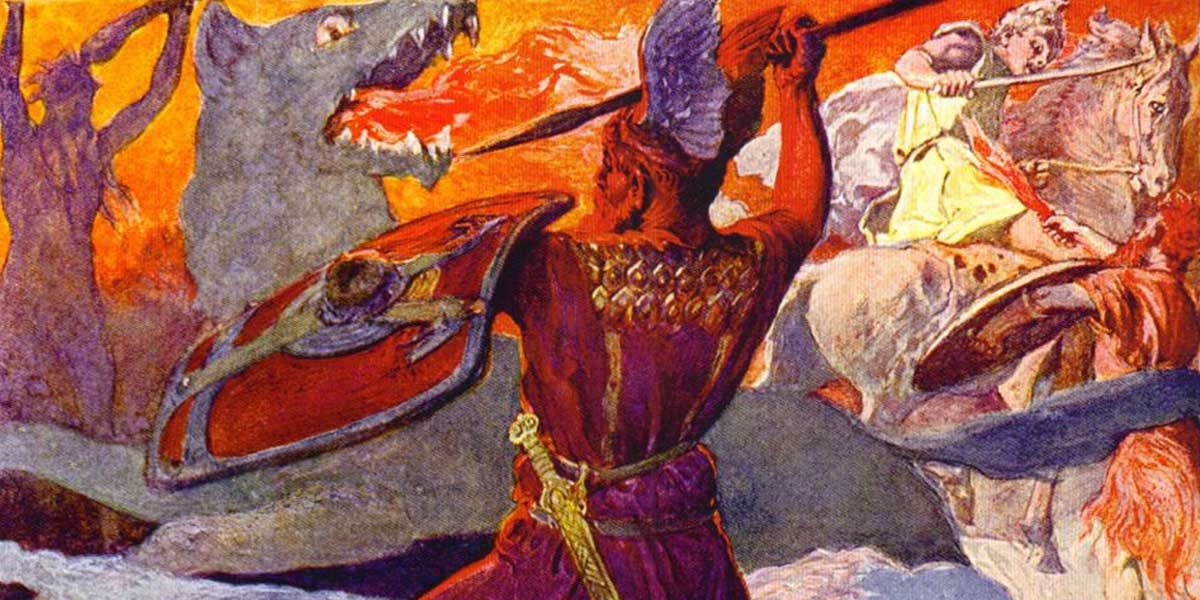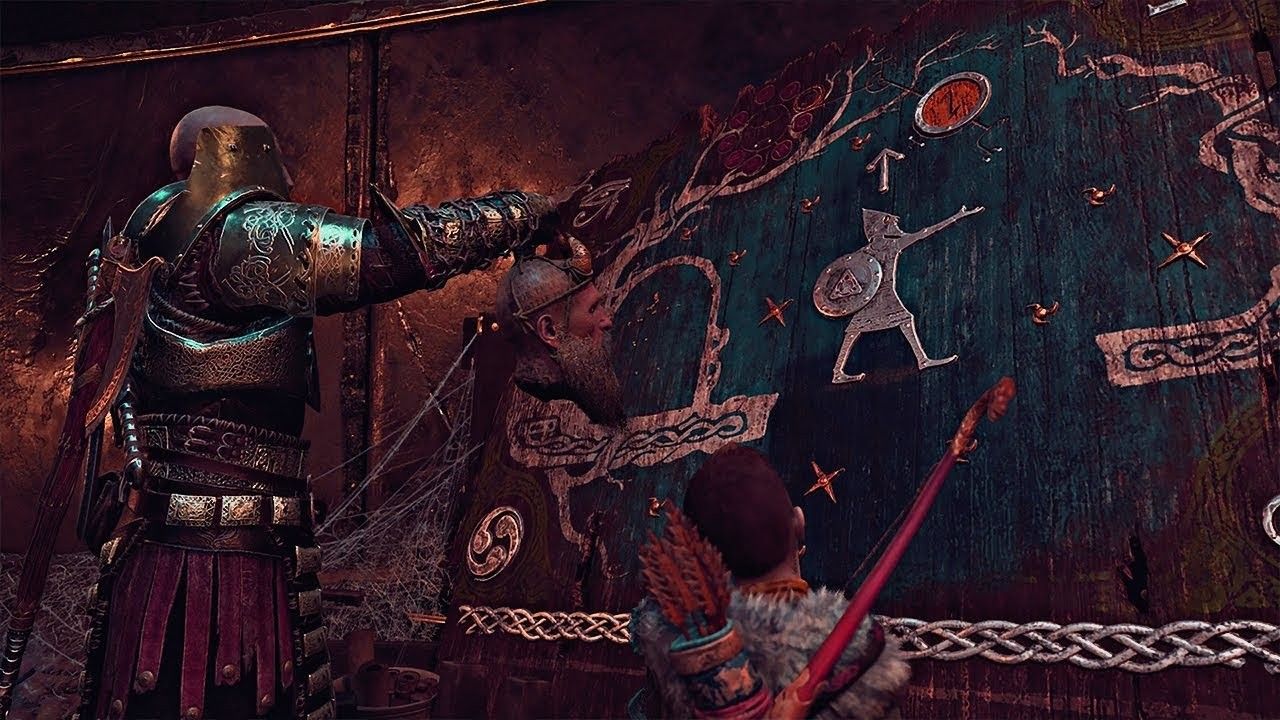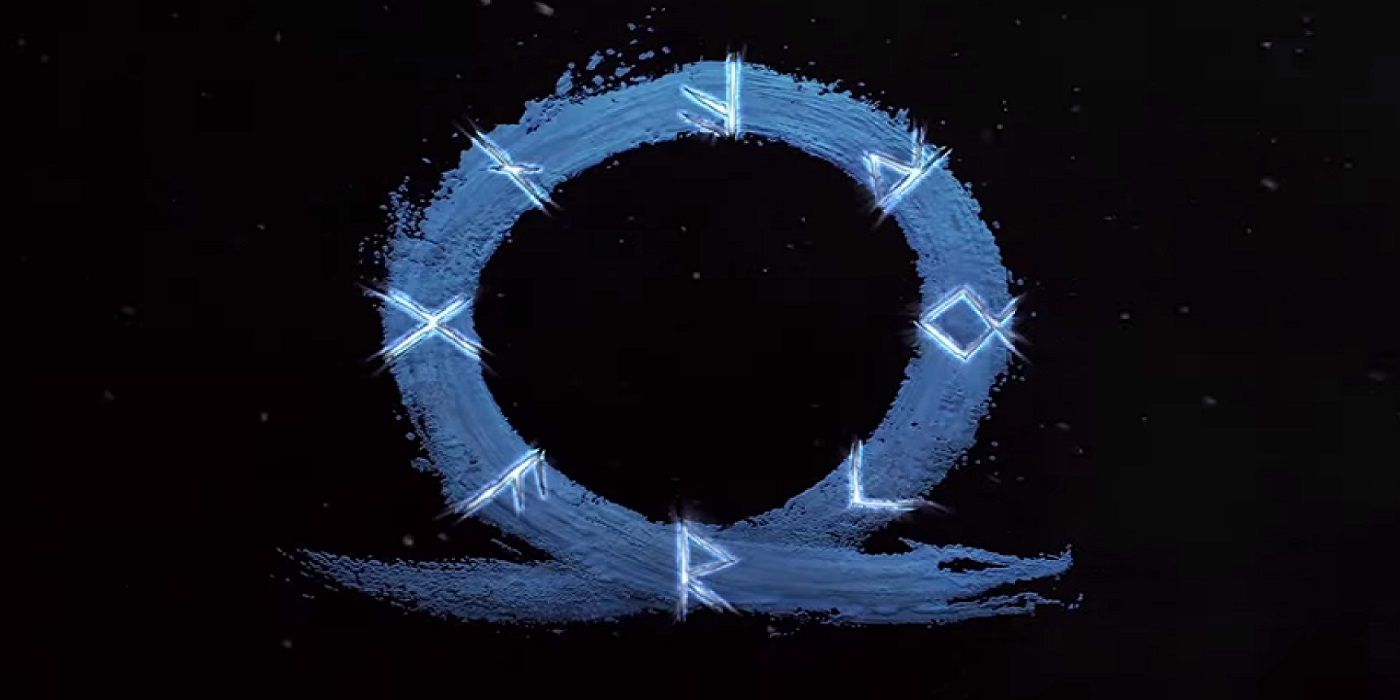Towards the end of 2018's God of War, when Atreus and Kratos are in Jotunheim, they find a mural depicting both the events of the game so far, and what appear to be some events which will take place in the game's upcoming Ragnarok sequel. Atreus never sees the final panel, which is only revealed when a piece of fabric blows aside once Atreus has already left the room. The panel shows Kratos an image of Atreus cradling a man, who appears to be either dead or dying, as a strange magical substance connects the pair by the mouth.
Many fans took this foreboding image to mean that Atreus will kill Kratos in the next God of War. After the same scene revealed that Atreus was in fact Loki, the Norse god of deceit, it seemed a natural conclusion. However, while Kratos' death in the next game has been taken as a given by many fans - or at least, the prophecy itself even if it ends up being subverted - the evidence doesn't quite line up. There are multiple hints that the dying man may not be Kratos. Here are just some of his possibly identities based on the mural and what has been revealed in the games so far.
Why Not Kratos?
At a glance, the dying figure in the Jotunheim mural appears to be Kratos. He's bald and bearded, and as a reveal the possibility that Atreus will betray and possibly kill his father certainly has a lot of dramatic weight in the scene. The fact that Kratos sees the mural and chooses not to tell Atreus could be interpreted as resignation to his fate. There are a few big problems with the idea that the man in the mural is the Ghost of Sparta, however.
For a start, Kratos and Atreus are depicted elsewhere in the Jotunheim mural on the panels which depict the events of the game so far, like their battle with Baldur. The depiction of Atreus is consistent across the entire mural, but if the man in the final panel is Kratos, he is depicted very differently from the panels so far. In the previous panels, Kratos is clearly identifiable by his tattoos, and the depiction of his armor is consistent between the panels which depict the events of the last game. In the final panel, the dying figure doesn't have the same tattoos or armor as Kratos.
Odin
The runes surrounding the two figures in the final panel have been translated by some fans as "father," "death," and "mourned." The final word — "svik" — can be translated as either "deceit" or "betrayal." These have been used to support the theory that the figure is Kratos, but there is an alternate interpretation. Father could be in reference to Odin, the All-Father of Norse mythology. If the runes refer to the domains of the Norse gods involved, then "svik" might simply be the label attached to Atreus as Loki, the god of deceit.
The dying figure also appears to be missing an eye — Odin sacrificed his eye to Mimir's well. It's possible this is just damage to the mural, but it seems likely that Santa Monica Studio is intentionally blurring that line. The biggest point against the figure being Odin is Odin's prophesized death in Ragnarok, where he is famously devoured by the wolf Fenrir. It seems unlikely that the studio will want to miss depicting that iconic mythological moment for the sake of its own story.
Tyr
As well as missing an eye, the dying figure in the final panel also appears to be missing a right arm, although it's also unclear whether or not this is part of the depiction, or simply damage done to the mural. Tyr lost his right arm during the binding of the wolf Fenrir in Norse myth. During Ragnarok itself, Tyr fights the hellhound Garm, who bites off his other hand before they mutually mortally wound one another.
The figure could be Tyr, who is himself the Norse god of war, and similar to Odin has yet to be revealed in the games so far. The case against this, however, is largely that it lacks the dramatic weight of the figure being either Odin, the ruler of the Norse pantheon, or Kratos, Atreus' father. It also doesn't explain the runes meaning "father." However, there is another possibility which could bring everything together.
Loki Himself
There's plenty of evidence that God of War's Ragnarok will involve time travel. The last game already revealed the World Serpent seen in game was sent back in time to the Lake of Nine when his battle with Thor during Ragnarok caused the Tree of Life to splinter. Mimir's comment that the World Serpent found Atreus "familiar" is a reference to the fact that Loki is the father of the World Serpent in Norse mythology. Presumably, Atreus will father both Jormungandr and Fenrir in the next game, and may even be sent back in time during Ragnarok to give time for him to grow up and do so.
In this case, it is possible that Atreus will encounter an older version of himself during Ragnarok. This might explain the strange substance connecting the pair by the mouth, which could be to do with their connection as the same being at different times. The next game's marketing so far has focused on self-fulfilling cycles — the logo is an image of the World Serpent eating its own tail - so this could make a lot of sense.
It would also explain the figure's resemblance to Kratos, while the runes meaning "father" might refer to Loki's role as the father of the monsters that play a vital role in Ragnarok. Unlike Tyr or Odin, this could be a very narratively satisfying conclusion, though it risks becoming as complicated as the original God of War 2's time travel plotline.
Whoever the man in the final panel of the Jotunheim mural ends up being, he is far less likely to be Kratos than many assume. Fans will have to wait until the next game releases, however, for his true identity to finally be revealed.
A sequel to God of War is currently in development for the PlayStation 5.

